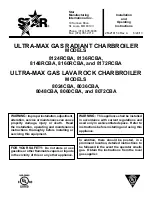
5.3 Condensate connection
Route the condensate drain with a constant slope.
Route the condensate from the flue system (if equipped with a drain)
together with the boiler condensate directly via a neutralising system
or an active charcoal filter (accessories) to the public sewer (observe
current regulations).
Note
A pipe vent valve must be installed between the siphon and the neu-
tralising system.
Condensate drain and neutralisation
Drain condensate created during heating operation in the condensing
boiler and flue pipe via a suitable neutralising system (available as an
accessory). The pH value lies between 2 and 3.
The Code of Practice ATV DVWK A 251 on "Condensate from con-
densing boilers", that is generally based on the local waste water reg-
ulations [in Germany], determines conditions for draining condensate
from condensing boilers into the public sewer system.
ATV DVWK A 251 specifies no requirements for a neutralising system
for operation with low sulphur fuel oil (sulphur content
≤
50 mg/kg).
Use an active charcoal filter (accessory) when not using any neutral-
ising system.
The condensate drain to the sewer connection must be able to be
inspected. It must be installed with a slope and stench trap.
Condensate drains must only be made from corrosion-resistant mate-
rials (e.g. reinforced hoses).
Never use any galvanised materials or
those containing copper for pipes, connectors, etc.
A siphon is installed in the condensate drain to prevent flue gases
escaping.
Local waste water regulations and/or specific technical circumstances
may specify designs that vary from those described in the above
Codes of Practice.
Also ensure that your domestic drainage system is made from mate-
rials that are resistant to acidic condensate.
According to the Code of Practice ATV DVWK A 251, these materials
include:
■ Clay pipes
■ Hard PVC pipes
■ PVC pipes
■ PE HD pipes
■ PP pipes
■ ABS/ASA pipes
■ Stainless steel pipes
■ Borosilicate pipes
It is advisable to contact your local authority responsible for waste
water management prior to installation, to find out about local regula-
tions.
Neutralising system
A
B
Shown on the Vitoladens 300-W
A
Condensate drain
B
Neutralising system
The Vitoladens can be supplied (if required) with a separate neutral-
ising system (accessory).
Any condensate is piped to and processed in the neutralising sys-
tem.
The condensate drain to the sewer connection must be able to be
inspected. It must be installed with a slope and stench trap on the
sewer side, and must provide a suitable facility for extracting sam-
ples.
Install a condensate lifting pump if the Vitoladens has been installed
below the waste water anti-flooding level.
Since the consumption of neutralisation granulate depends on the
operating mode of the system, determine the required top-up amount
during the first year of operation by regular checks. It is feasible that
one fill may last longer than 12 months.
For the specification of the neutralising system and active charcoal
filter (accessories), see page 30.
Design information
(cont.)
VITOLADENS 300-W
/
VITOLADENS 333-F
VIESMANN
53
5822 425 GB
5
















































